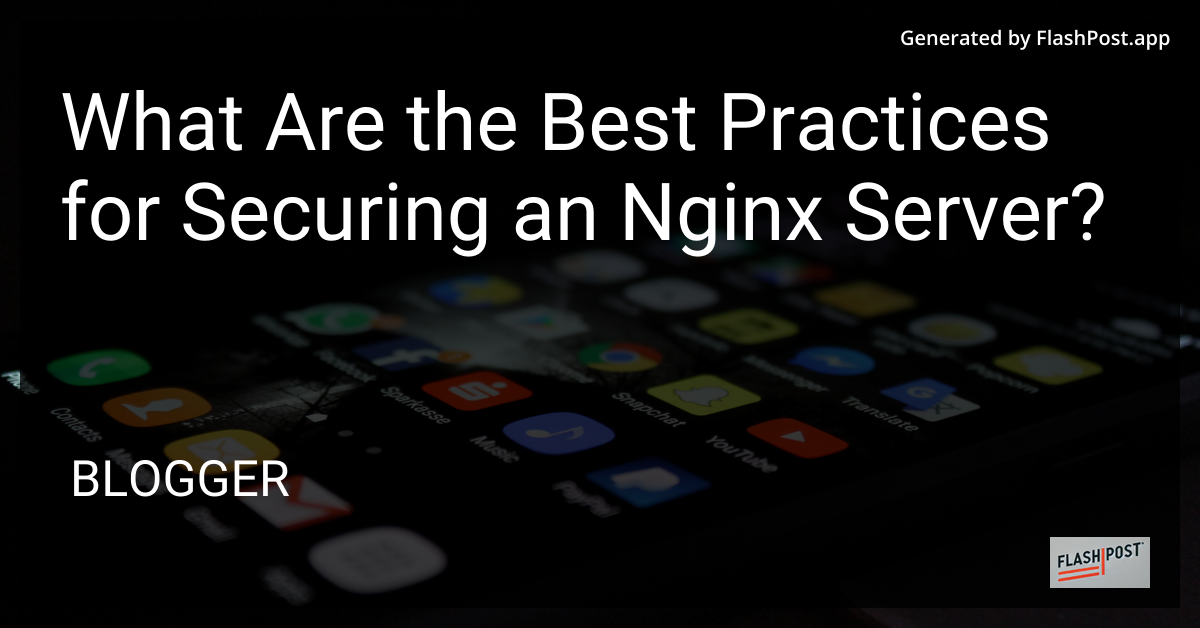What Are the Best Practices for Securing an Nginx Server?

Best Practices for Securing an Nginx Server
In the world of web servers, Nginx has become an indispensable tool due to its high performance and low resource consumption. However, with great power comes great responsibility: securing your Nginx server is crucial to safeguard sensitive data and ensure the smooth operation of your web services. Below are the best practices you should follow to secure your Nginx server.
1. Keep Nginx Updated
Keeping your Nginx server up to date is the first step in securing it. New versions often include patches for vulnerabilities. To know what version you are running, you can check out how to find nginx version.
2. Utilize a Minimal and Secure Configuration
When setting up nginx server configuration, always opt for a minimal setup to reduce potential attack vectors. Enable only the features you need, and disable unnecessary modules.
3. Configure SSL/TLS
It’s essential to use SSL/TLS for encrypting HTTP traffic. Obtain an SSL certificate from a trusted Certificate Authority and configure it in your server block as follows:
server {
listen 443 ssl;
server_name example.com;
ssl_certificate /path/to/certificate.crt;
ssl_certificate_key /path/to/privatekey.key;
...
}
4. Implement Security Headers
Adding security headers is a good way to enhance security. Headers like X-Frame-Options, X-Content-Type-Options, and Content-Security-Policy can help mitigate various attack vectors.
add_header X-Frame-Options "DENY";
add_header X-Content-Type-Options "nosniff";
add_header Content-Security-Policy "default-src 'self'";
5. Limit and Control Access
Restrict access to your Nginx server as much as possible. You can use allow and deny directives in your configuration file to limit IP access.
location / {
allow 192.168.0.0/24;
deny all;
}
6. Harden Nginx with Rate Limiting
Implement rate limiting to protect your server from brute-force attacks:
http {
limit_req_zone $binary_remote_addr zone=one:10m rate=1r/s;
server {
location /login {
limit_req zone=one;
}
}
}
7. Register Routes Correctly
Always register routes correctly to avoid unauthorized access. This can also help in effectively managing traffic across your web services.
8. Regular Monitoring and Logging
Regularly monitor your server’s activity and log everything. Analyze logs for any suspicious activity to quickly identify and respond to potential threats.
By adhering to these security best practices, you can ensure that your Nginx server remains robust against various security threats. Stay vigilant and regularly review your security measures to adapt to emerging vulnerabilities.
For more comprehensive understanding, delve deeper into each topic and continuously update your knowledge base to keep up with the dynamic cybersecurity landscape. “`
These recommendations provide a strong foundation for securing an Nginx server. Implementing them will help protect your web services against a wide range of potential threats and vulnerabilities.
Comments
Post a Comment